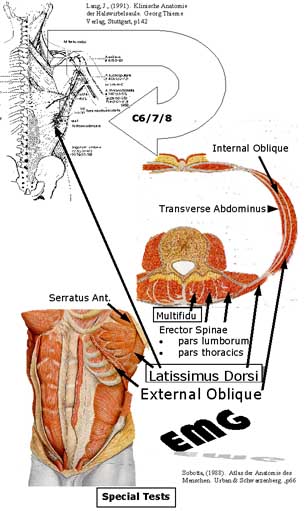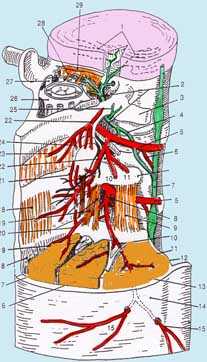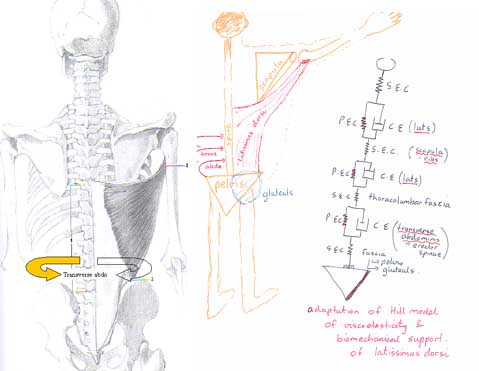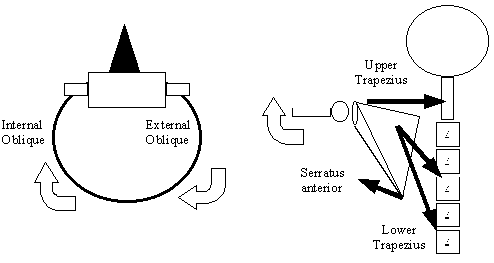Biomechanical considerations, nerve innervation, force vectors and clinical reasoning



Torques and the Muscular System
Stability
- The stabilising component of the muscle force is the one which acts through the long axis of the bone, and therefore cannot contribute to the rotary torque.
Summation of torques
- The effect of equal parallel forces acting in opposite directions is called a force couple eg the hands on a steering wheel of a car, Scapular motion, Internal and External Oblique and Transverse Abdominus.

- Resultant torques of a force system must be equal to the sum of the torques of the individual forces of the system about the same point, therefore rotation will be absent when the sum of the torques of all forces about any point or axis equals zero.
Levers
- Used to either overcome a resistance larger than the magnitude of the effort applied to or increase the speed and range of motion through which resistance is moved eg a crowbar uses power at the expense of ROM, the golf club uses ROM at the expense of force.
Anatomical Levers
- The bone serves as a rigid bar, the joint as the fuclrum, and the contracting muscles as the force.
Newtons third law : "for every action there is an equal and opposite reaction" suggests that movements in one part of the body must be stabilised by an equal and opposite force in that plane of motion. Therefore, the global stabilisers must be activated in anticipation or else the specific stabilisers must react in that plane of motion. Reactions after the movement has already occurred leave the possibility of injury.
First Class Levers
- The axis lies between the effort and the resistance eg triceps dip, head nodding

Second Class Levers
- The resistance lies between the axis and the effort.

- This arrangement has the advantage of magnifying the effects of the effort so that it takes less force to move the resistance. Its disadvantage is thats its ROM is sacrificied eg Wheelbarrow, door, nutcracker, foot raising in PF
- Eccentric muscle contractions against gravity eg brachialis during elbow extension
Third Class Levers
- The effort lies between the axis and the resistance.

- A very small motion by the effort will produce a large motion in resistance
- The advantage of a third class lever is speed and ROM eg biceps during flexion, however poorer control of motion
Global stabilizers
- Muscles which stabilise regardless of the direction of movement eg Transverse abdominus uring arm movement, the contralateral upper and lower trapezius during arm movement
- Usually multisegmental
Specific stabilizers
- Muscles which stabilise specific to the direction of movement
- Generally cross one joint in the periphery (cross 2 joints in spine), deep and close to the joint.
- May serve a proprioceptive function eg multifidus
- Generally endurance, 'shunt' muscles eg: Brachioradialis, brachialis, rotator cuff
Specific Mobilisers
- Generally 'spurt' muscles and direction dependent eg Pectoralis Major
link to Chronic Low Back Pain

























































































































